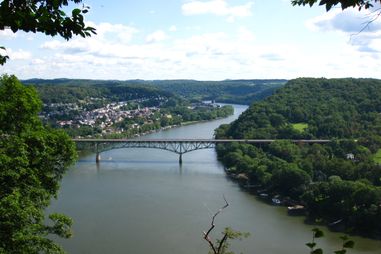What is 3RQ?
Water: One of our most precious and vital resources, it is essential for life and economic prosperity. Yet so many of the activities that keep our economy alive and growing also threaten our water resources.
At the West Virginia Water Research Institute, we understand how essential clean water is to our way of life. We work to establish programs and new initiatives that help to develop new technologies and inform policy to keep our water protected. It is this dedication to clean water that was the catalyst for the long-term, comprehensive water quality monitoring and reporting program we call Three Rivers QUEST (3RQ).
The 3RQ project monitors rivers, tributaries and headwater streams that drain an area of over 25,000 square miles in five states. It brings together academic researchers, citizen scientists, and conservation groups to collect, analyze, and monitor important water quality data. This data is displayed on the 3RQ website and can be seen here. This data is displayed to provide the public, other researchers, federal and state agencies, and industry with timely and accurate information as it pertains to the overall health of our local rivers and streams.


